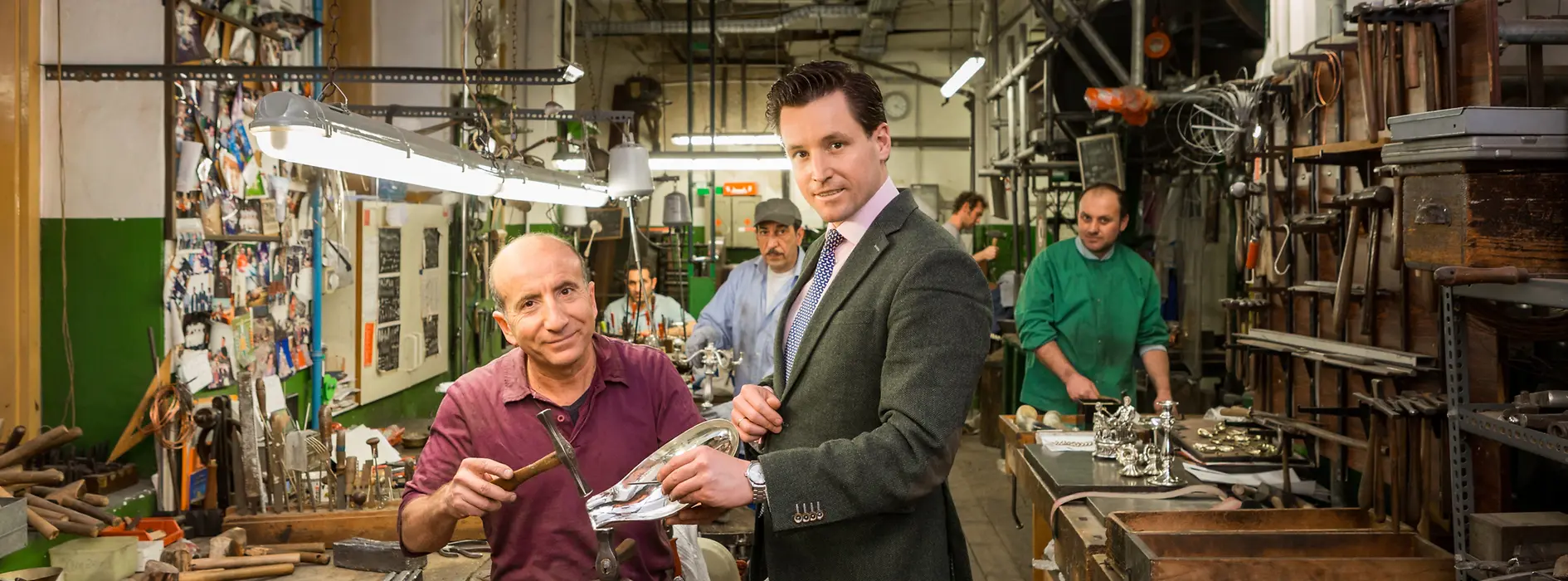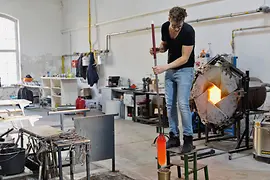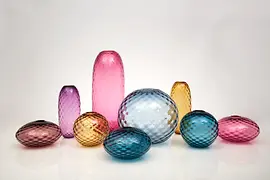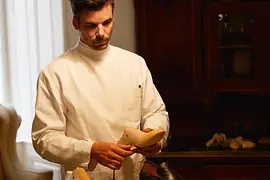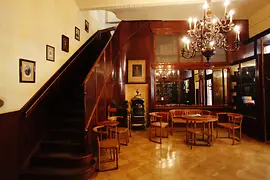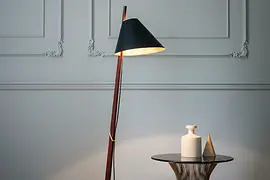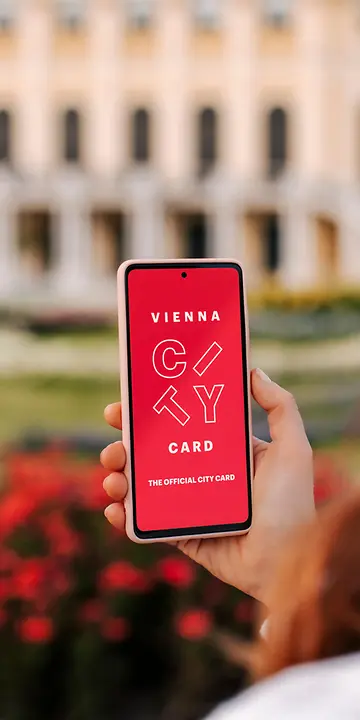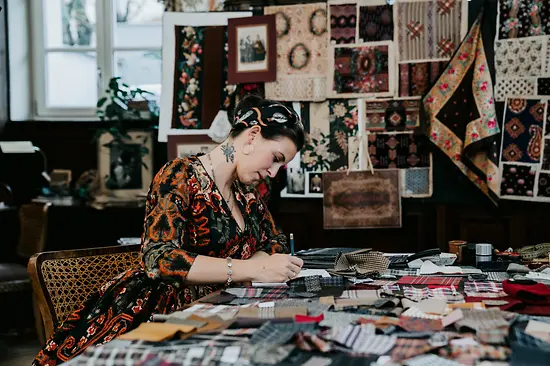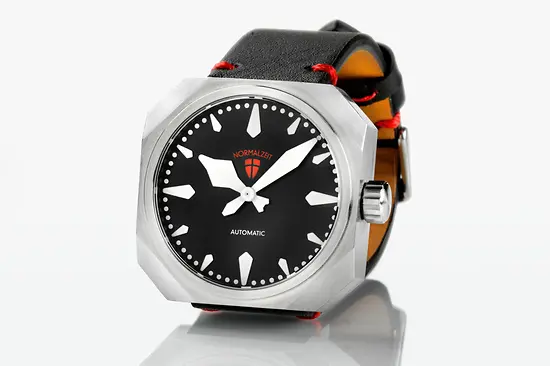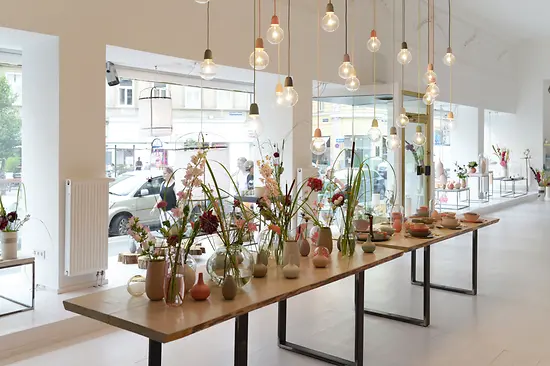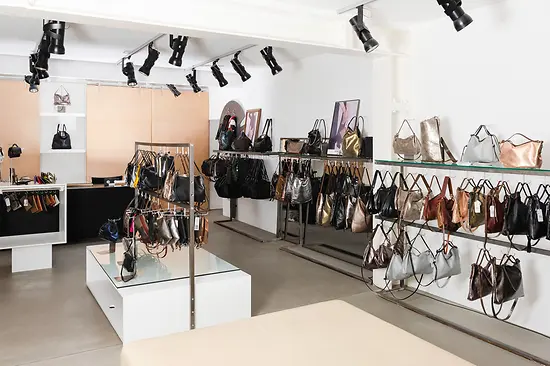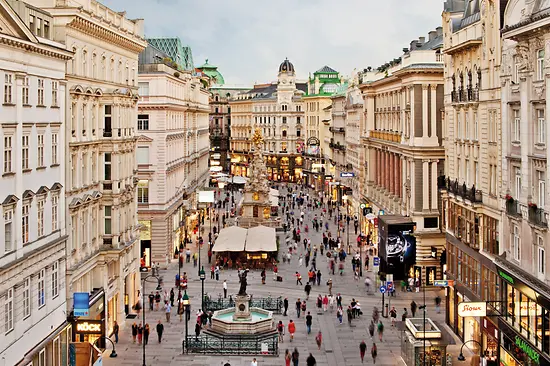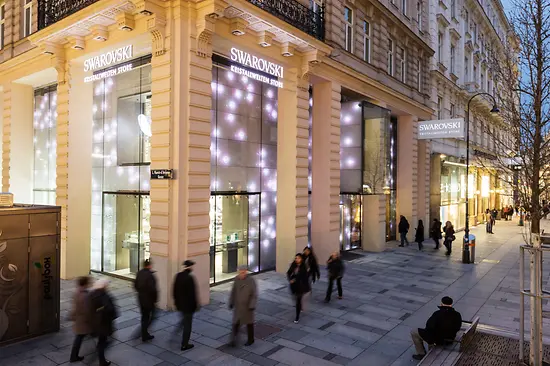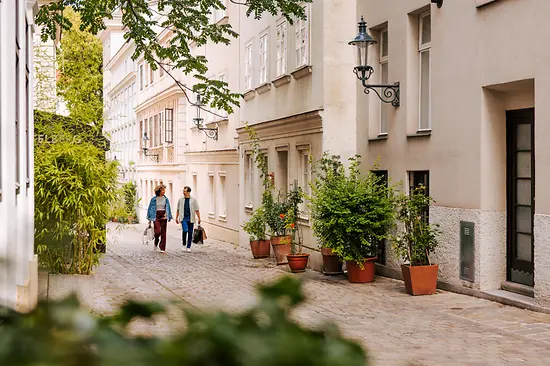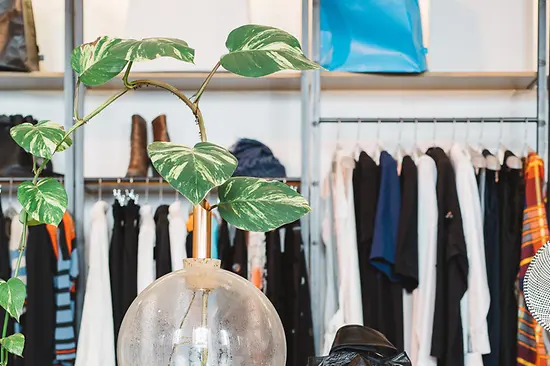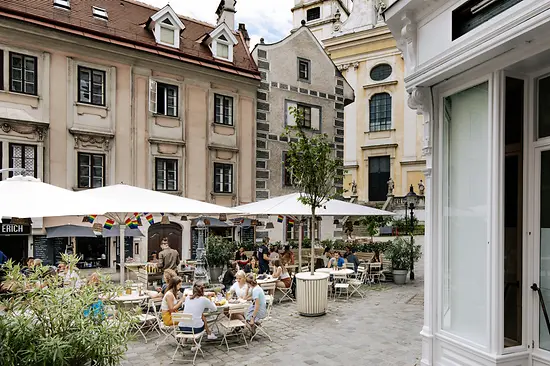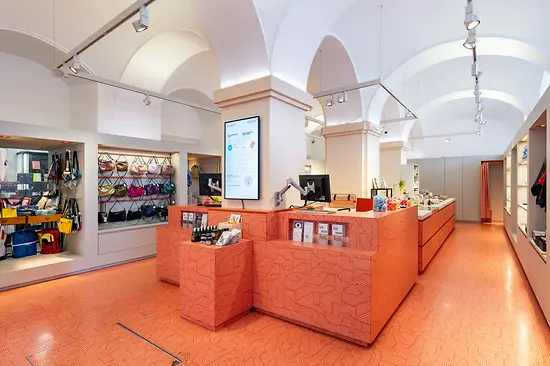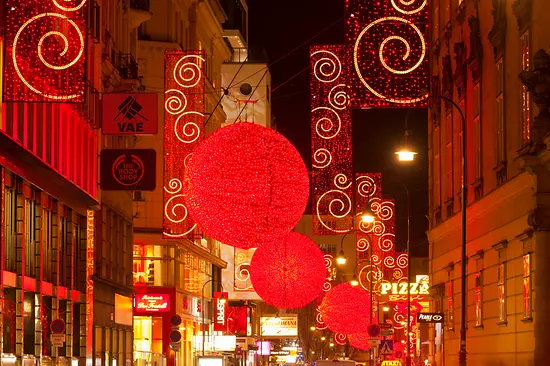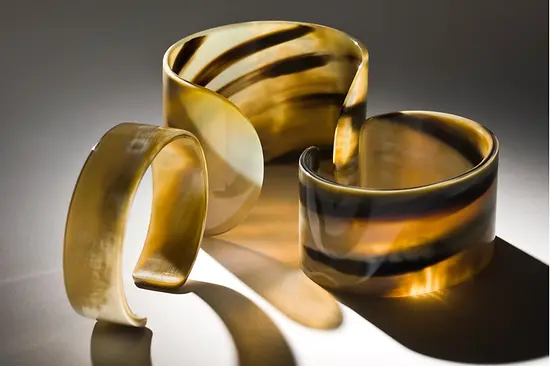Handmade in Vienna
Like slipping through a portal back in time, we enter the store on Zieglergasse 24 where we find ourselves in the old-school showroom of the illustrious silversmiths Jarosinski & Vaugoin. Jean-Paul Vaugoin, the sixth-generation owner, cuts a distinguished impression and receives his customers with impeccable manners. Full of pride, he takes a lavishly-decorated Baroque tableware set out of the glass display cabinet, cracks jokes about a chicken leg holder and tells the story of how his ancestors were granted permission to make replicas of Benvenuto Cellini’s Saliera salt cellar (for a state visit to Vienna by the young Queen Elizabeth II). Shiny objects glint in the light at every turn.
Display alternative text
Jean-Paul Vaugoin tells the story of the Saliera made by the silversmiths Jarosinski & Vaugoin
Handmade in Vienna
Jean-Paul Vaugoin also lets us take a look at the workshop in the courtyard of the Biedermeier building. It looks just like it would have a century ago. The silversmiths are huddled over worn wooden tables. They hammer, file and grind the silver before polishing it to a shine, all by hand. The smell of metal and buffing paste hangs in the air. Chemicals that are needed for galvanizing bubble away in large vats. After many more stages in the process, some of the silverware eventually winds its way as far afield as the royal palaces of the Arabian Peninsula and Malaysia. And modern design is also created here.
Vaugoin puts some of the most special pieces from the silver manufactory on display in the company (est. 1847) museum. The business reveals how Vienna has always been a city of immigrants: the Vaugoin family came to Vienna at the time of Napoleon and never left, and the company’s master silversmith, Yakup Kurter, arrived from Syria 35 years ago.
A revolutionary glassblower
Studio Comploj provides a visually contrasting program. The Glashütte of glassblower Robert Comploj presents itself as a modern gallery that is also a shop. The exhibited vases, bowls, and ball surprise with unusual colors and extraordinary structures. And it is an even bigger surprise when Robert Comploj comes around the corner. Hipster glasses, black t-shirt and tousled hair – not exactly what people imagine a glassblower would look like. The friendly glassmaker manufactures the glass items himself in his manufactory in the 18th district. Robert Comploj learned his craft in Murano and combines old Venetian techniques with his own innovative methods.
The studio is hot as the furnaces are always on. Comploj is in his element here: he blows and moulds the delicate glass, although he likes to describe his approach to the medium as ‘punk’. He loves to shape the glass by hand, risking the odd burn or two in the process.
Bespoke luxury footwear
The Scheer workshop – former purveyor of footwear to the imperial and royal court – is like a library by comparison. Seated on traditional stools in front of low workbenches, the cobblers focus intently on their work. One of them is Markus Scheer, who now runs this 200-year-old family business that is in its seventh generation. His trademark is an orthopedic smock that he wears when working. It is a nod towards his training as a maker of orthopedic shoes, and symbolic of how important the perfect fit is for him when it comes to footwear.
The timespan between the first measurement and the finished product can easily reach half a year at Scheer. It takes around 60 hours to complete each pair of bespoke shoes. The workshop, located directly above the tradition-steeped store, once made shoes for none other than Emperor Franz Joseph. His wooden lasts and numerous historic shoe designs are on display on the ground floor. Originally only a shoemaker, Scheer now also makes bags, belts and luggage. The exclusive shop exudes history, without coming across as old-fashioned. And the fine aroma of leather is everywhere...
Contemporary lamp design
Designer Garth Roberts loves browsing the archives of traditional Viennese manufacturer J. T. Kalmar, whose light fixtures are in high demand the world over. Originals from the days of the Österreichischer Werkbund collective command high prices at auctions and antique stores, as their shapes dovetail beautifully with twenty-first century design culture. Garth Roberts is also captivated by the Werkbund designs. As the creative boss of Kalmar Werkstätten, he is helping to give Austrian Modernism a new lease of life by putting a contemporary spin on the old Werkbund sketches. The finished products speak a contemporary design language: they are minimalistic, functional and made from high-quality materials. The delicate feet of the Fliegenbein and Hase models are Kalmar to the core.
Quality made to measure
The store Zur Schwäbischen Jungfrau sells exclusive custom-tailored table linen, bedding and toweling. The traditional Viennese company was founded in 1720 by a linen trader from Swabia and later became an important supplier to the Imperial and Royal Court. Today, Hanni Vanicek and her nephew Theodor Vanicek run the company. High-quality bespoke items, monograms and embroideries are produced in their own studio in the 8th district. Royal houses from around the world number amongst the customers; the King of Malaysia once even paid a personal visit to the Schwäbische Jungfrau on Graben while on a state visit.
Text: Susanne Kapeller
- Zieglergasse 24, 1070 Wien
- silber@vaugoin.com
- https://vaugoin.com
Vienna City Card
Opening times
- Mo - Fr, 09:00 - 18:00
- Martinstraße 28, 1180 Wien
- http://glashuettecomploj.at
Opening times
- Mo - Th, 10:00 - 17:00
- Fr - Sa, 10:00 - 13:00
- Bräunerstraße 4, 1010 Wien
- scheer@scheer.at
- https://www.scheer.at
Opening times
- Mo - Fr, 10:00 - 17:00
- Sa, 10:00 - 16:00
- Bennogasse 8, 1080 Wien
- office@kalmarlighting.com
- http://www.kalmarlighting.com/
- Graben 26, 1010 Wien
- http://www.schwaebische-jungfrau.at/
Opening times
- Mo - Fr, 10:00 - 18:30
- Sa, 10:00 - 17:00
